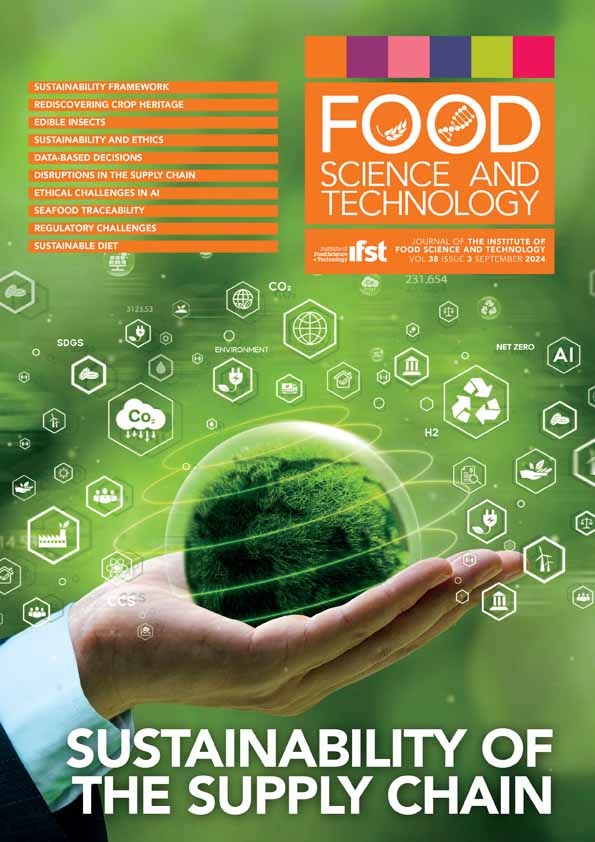Quality of native goat's milk from a multivariate perspective
Q2 Agricultural and Biological Sciences
引用次数: 0
Abstract
The aim of this study was to assess the relationship between physical components and the fatty acid (FA) profile of goat's milk, compare the physical and chemical variables of the milk using canonical correlation, and verify the contribution of the physical variables in predicting the FAs in the milk, contributing to the selection of the FA profile by the correlated response based on the physical profile of the milk. A total of 24 native goats, weighing 42 ± 4 kg and 30 ± 3 days into lactation, were used. The data were subjected to canonical analysis to identify the variables that best discriminate. The main objective of this procedure is to find the best set of variables to compose the discriminant function. Four components were needed to explain 70.68% of the total variation in the physical variables and FA profile in the milk of native goats. The percentage of variance accumulated in the first two factors is 41%. The most important variables in the first factor were the short-chain FAs, namely, caproic (6C), caprylic (8C), capric (10C), and lauric (C12), which are responsible for giving the milk its characteristic and even unpleasant odor, depending on their concentration. New studies with a larger sample of data should be carried out to better understand the relationships between physical and chemical variables in the milk of native goats as well as other breeds of goats for comparison. In addition, the weak simple correlations between the variables studied contributed to the results obtained.从多元角度看本地山羊奶的质量
本研究的目的是评估山羊奶的物理成分与脂肪酸(FA)概况之间的关系,利用典型相关性比较牛奶的物理和化学变量,并验证物理变量在预测牛奶中的脂肪酸方面的贡献,从而根据牛奶的物理概况通过相关反应选择脂肪酸概况。共使用了 24 只体重为 42 ± 4 千克、泌乳期为 30 ± 3 天的本地山羊。对数据进行了典型分析,以确定区分度最高的变量。这一程序的主要目的是找到组成判别函数的最佳变量集。需要四个成分来解释本地山羊奶中物理变量和脂肪酸谱总变异的 70.68%。前两个因子累积的变异百分比为 41%。第一个因子中最重要的变量是短链脂肪酸,即己酸(6C)、辛酸(8C)、癸酸(10C)和月桂酸(C12),根据其浓度的不同,这些脂肪酸赋予牛奶特有的甚至是难闻的气味。为了更好地了解本地山羊奶和其他品种山羊奶中物理和化学变量之间的关系,我们应该开展新的研究,收集更多的数据样本,以便进行比较。此外,所研究的变量之间存在微弱的简单相关性,这也是造成研究结果的原因之一。
本文章由计算机程序翻译,如有差异,请以英文原文为准。
求助全文
约1分钟内获得全文
求助全文
来源期刊

Food Science and Technology
农林科学-食品科技
自引率
0.00%
发文量
0
审稿时长
12 weeks
期刊介绍:
Information not localized
 求助内容:
求助内容: 应助结果提醒方式:
应助结果提醒方式:


